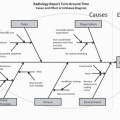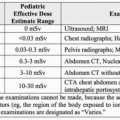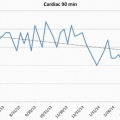Credentialing and Certification of Programs and Individuals
Jeffrey P. Kanne
LEARNING OBJECTIVES
1. List the credentialing and certifications available for health-care facilities and organizations
2. List the credentialing and certifications available for individual practitioners
3. State the ACGME’s six core competencies
4. Describe the American Board of Radiology’s certification process
A variety of required and optional certifications and accreditations are available for health-care organizations and health-care providers. Some credentials fall under the purview of government agencies, whereas others are granted by independent organizations that aim to improve the overall quality of health-care delivery. Because radiology is central to health-care delivery and has a significant role in both inpatient and outpatient settings, certifying and accrediting organizations directly impact radiologists and radiology departments.
PROGRAMS FOR ORGANIZATIONS
American College of Radiology
Under the Medicare Improvement for Patients and Providers Act of 2008 (MIPPA), providers of advanced diagnostic imaging (CT, MRI, and PET) that bill under the technical component of part B of the Medicare Physician Fee Schedule (i.e., outpatient imaging) must be accredited by a Centers for Medicare and Medicaid Services (CMS)-designated accrediting organization. The American College of Radiology (ACR) offers accreditation to facilities in various advanced imaging modalities (see Chapter 1).1
The Joint Commission
The Joint Commission (TJC) accredits and certifies more than 20,000 health-care organizations and programs in the United States. Facilities ranging from office-based surgical suites to large hospitals can apply for TJC accreditation. Organizations can also earn certification from TJC for programs focused on specific chronic diseases such as asthma, diabetes, and heart failure.2
Other Accrediting Bodies
In addition to TJC, several smaller organizations have been granted “deeming” status by CMS for accrediting hospitals and other health-care delivery entities. Det Norske Veritas Healthcare, Inc. (DNV), the Healthcare Facilities Accreditation Program (HFAP), and Center for Improvement in Healthcare Quality (CIHQ) also have accrediting programs for health-care organizations.
The Leapfrog Group
The Leapfrog Group (Leapfrog) is an independent, not-for-profit organization founded by a group of large employers in 2000, with the purpose of assessing safety, quality, and efficiency of health-care organizations so that those who use and pay for health care can make informed decisions. Furthermore, Leapfrog promotes high-value health care through various incentives and rewards. Leapfrog members include large corporations and public employers, organizations of purchasers such as business coalitions and alliances, and its liaisons, which include the Centers for Medicare & Medicaid Services (CMS) and the Department of Defense (DOD).
In 2001, Leapfrog launched the Leapfrog Hospital Survey to encourage hospitals to publically report their respective progress in meeting key safety practices. The three initial areas assessed in the survey were computerized physician order entry, intensive care unit physician staffing, and evidence-based hospital referral. The survey has evolved into a balanced assessment of quality and safety that focuses on hospital structure, processes of care, and outcomes.3 After survey data are received and verified, Leapfrog publically publishes its results, giving each institution a letter Grade (A through F) and reporting measure of specific performance compared with other surveyed hospitals.4
INDIVIDUAL CREDENTIALING AND CERTIFICATION
American Board of Radiology
The American Board of Radiology (ABR), founded in 1934, is a not-for-profit organization that is one of the 24 independent national boards belonging to the American Board of Medical Specialties (ABMS). The ABR currently issues primary certification in diagnostic radiology, radiology oncology, and medical physics. The ABR is also planning to offer a combined diagnostic and interventional radiology primary certificate in the near future. Subspecialty certificates currently offered by the ABR include hospice and palliative
medicine, neuroradiology, nuclear radiology, pediatric radiology, and vascular and interventional radiology.
medicine, neuroradiology, nuclear radiology, pediatric radiology, and vascular and interventional radiology.
Certification in Diagnostic Radiology
ABR certification in diagnostic radiology requires completion of an Accreditation Council for Graduate Medical Education (AC-GME) or Royal College of Physicians and Surgeons of Canada (RCPSC)-accredited diagnostic radiology residency training program and passing of the ABR’s Core Examination and Certifying Examination in diagnostic radiology (Table 12.1). The ABR also provides an alternative pathway to certification for international medical graduates.5
Core Examination
Currently, eligible trainees can sit for the Core Examination following completion of 36 months of residency training. The Core Examination is computer based and image rich and covers 18 subspecialty and modality areas. Examinees must pass all categories to receive a passing result.6
Certifying Examination
Radiologists can sit for the Certifying Examination no sooner than 15 months following completion of residency training and only after receiving a passing result on the Core Examination. Unlike the Core Examination, which examines all subspecialties and modalities, the Certifying Examination allows examinees to select the areas in which they wish to be examined on the basis of training, experience, and practice emphasis. Up to three subspecialty areas can be selected. The Certifying Examination also includes a module in noninterpretative skills such as quality and safety, professionalism, and ethics, as well as an “Essentials of Diagnostic Radiology” module that focuses on “basic knowledge that every radiologist should know, such as recognizing child abuse, pneumothorax, shock bowel, and subdural hematoma.”7
Board Eligible and Board Certified
Upon successful completion of residency training, radiologists are deemed “Board Eligible” by the ABR and have six full calendar years from the end of training to receive certification in diagnostic radiology from the ABR. Upon successful completion of both the Core Examination and the Certifying Examination, diplomates are “Board Certified” by the ABR.5
Subspecialty Certificates
The ABR offers subspecialty certificates (formerly certificates of added qualification) in pediatric radiology, neuroradiology, vascular and interventional radiology, nuclear radiology, and hospice and palliative medicine. These certificates are intended for radiologists who have undergone additional training in these areas. Certification and maintenance of certification (MOC) in these subspecialties are integrated into the overall certification and MOC processes.
Table 12.1 AMERICAN BOARD OF RADIOLOGY DIAGNOSTIC RADIOLOGY EXAMINATION. | |||||||||||||||
|---|---|---|---|---|---|---|---|---|---|---|---|---|---|---|---|
| |||||||||||||||
Stay updated, free articles. Join our Telegram channel

Full access? Get Clinical Tree








